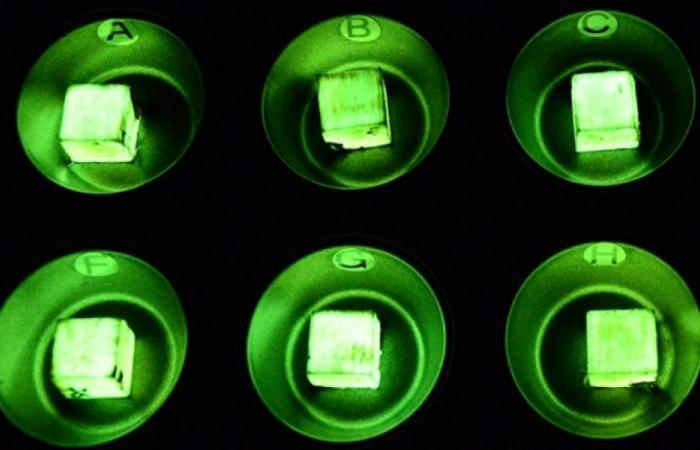How to enhance wood through bioluminescence using a fungus is the latest discovery by Empa scientists. In addition to applications in the technical field, luminous wood could be transformed into designer furniture or jewelry.
The team of mycology researcher Francis Schwarze, from Empa’s Cellulose & Wood Materials laboratory in St. Gallen, was interested in the fungus Desarmillaria tabescens, or ringless armillaria, a wood parasite. It produces a natural substance, luciferin, whose luminescence is stimulated by an enzymatic process. The wood crossed by filaments of mushrooms emits a green light.
“Naturally luminous wood was first described around 2,400 years ago by the Greek philosopher Aristotle,” explains Francis Schwarze, quoted Thursday in a press release from the Federal Laboratory for Materials Testing and Research (Empa). The intertwined structure of mushroom and wood can be described as a natural biohybrid, a combination of living materials.
But what nature seems to achieve easily has until now remained a challenge for biotechnology. The Empa team has now succeeded for the first time in inducing and controlling the process in the laboratory, according to this work published in the journal Advanced Materials.
Stability maintained
Francis Schwarze discovered luminous mushrooms in nature, analyzed them in the laboratory and deciphered their genetic code. The ringless armillary proved to be particularly efficient.
After preliminary tests with different types of wood, Professor Schwarze opted for balsa, whose density is particularly low. Using spectroscopy, scientists observed how the fungus degrades lignin responsible for rigidity and resistance to pressure.
X-ray diffraction analyzes showed that the stability of the wood did not disappear: the cellulose, which provides tensile strength, remained intact.
The biohybrid of mushroom and wood unfolds its maximum brightness after being placed for three months in an incubator. Desarmillaria tabescens particularly likes humidity: the balsa samples absorbed eight times their weight in humidity during this period.
Once in contact with air, the enzymatic reaction begins in the wood. The green glow unfolds all its splendor after ten hours. Currently this process takes approximately 10 days. “We are now optimizing the laboratory parameters in order to further increase the brightness in the future,” concludes the scientist.
This article was automatically published. Source: ats






